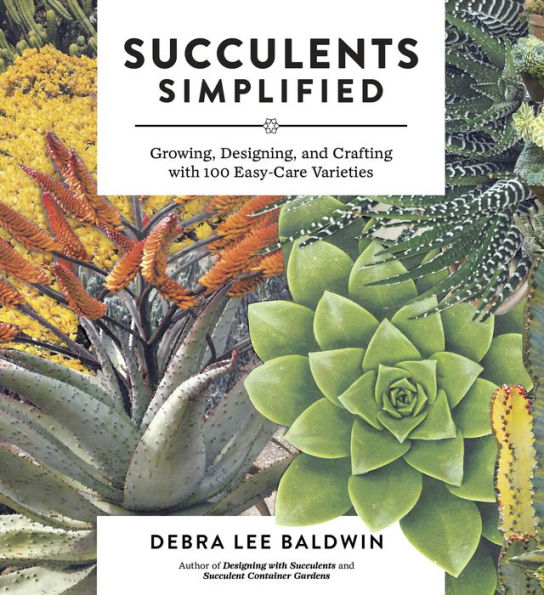Read an Excerpt
Introduction
When people ask me how I became interested in succulents, I tell them I toured an amazing succulent garden on assignment for the San Diego Union-Tribune. Horticulturist Patrick Anderson and his aloe garden opened my eyes to the beauty of succulents and their potential in garden design.
Yet even as I say this, around the edges of my awareness floats a much earlier memory. I was eight or nine years old when I went with my mother to a home in a wealthy community for an occasion I don’t remember. When we returned home, my mother described the house to my father: "Big picture windows, but imagine having to clean them. Views of the golf course, but the property is too steep. Surrounded by trees, but they shed leaves and bark. Big deck off the living room, but no garden."
No garden? There had been an astonishing one, in pots on the deck, with plants unlike any I’d seen before. They looked like eels, starfish, and coral. One was a perfect little sphere with a green-and-maroon herringbone pattern. Others were necklaces of blue-gray buttons, rubbery silver-blue roses, and sticks of green chalk with windowed tips.
My mother concluded wistfully, "Maybe someday Debbie will have a house like that."
Why would I want it, I wondered, if it came with dirty windows, messy trees, and near-vertical land? On the other hand, who wouldn’t want that deck garden? It became something I longed for, along with a saltwater aquarium, a hot air balloon, and an unlimited supply of chocolate marshmallows.
I no longer want any of those, but succulents continue to seduce me. I’m that little girl again when I see a succulent I haven’t seen before, or even a well-grown one I may have seen dozens of times. You might assume I have a vast collection, and although I do own dozens of varieties, I don’t consider myself a collector. Fascination need not be possession. I’m equally happy looking at succulents in a nursery, at a show, or in someone else’s garden. In particular, I enjoy capturing and recording succulents’ myriad shapes and textures with my camera.
For most of my career, I’ve written about all sorts of plants. Words are still my first love, but nothing describes a plant or a garden as well as a photo. As I practice this art form, I often think of how "photography" means "writing with light." Camera in hand, I circle a succulent, looking for the best light. In slanted early morning or late afternoon sun, red margins burn neon bright, spines incandesce, fuzzy filaments shimmer, and leaves reveal glowing hues of rose, orange, purple, and blue. As you might imagine, it was difficult to winnow the selection of photos for this book. So many have merit, or illustrate an important point, and I was continually thinking, "But I have to show them this one!"
This, my third book about succulents, is a kind of prequel to the previous two. It’s a guide for novice enthusiasts, a quick reference for anyone seeking an overview, and a vehicle for presenting design ideas I’m excited about. Throughout, I share my perspective on a subject that has become my passion.
Part One explains succulents’ many desirable qualities and suggests how you might use the plants to enhance your garden, regardless of its size. You’ll discover how top garden designers use succulents as a three-dimensional palette. In addition to what’s practical and beautiful, I delve into the bizarre, eye-catching, and collectible. You’ll also find out how to keep your succulents looking as good as the day you brought them home from the nursery. These plants survive neglect but when well tended show their gratitude by being even more glorious.
In Part Two, you’ll see step by step how to create succulent centerpieces, bouquets, hanging baskets, and more—all fun and useful projects to enhance your home, to celebrate special occasions, and to give as gifts. It’s possible to use succulents in ways unthinkable with other plants. Wait ‘til you see Laura Eubanks’s moss-and-glue method and how Robyn Foreman turns echeverias into long-lasting rose look-alikes.
In Part Three, I present my top one hundred plant picks. Most are succulents I’ve grown myself and would like you to consider, too. All are readily available (or are fast becoming so) and are easy to grow—providing, of course, you understand a few cultivation basics. No worries. No talent is needed, simply an admiration for succulents, an eagerness to learn, and a willingness to experiment.
Above all, I hope to expand your awareness of beauty and increase your desire to use these fleshy, geometric plants to enhance your outdoor living spaces and to express your unique style. Please don’t feel intimidated by succulents that are new to you. If you like them, grow them. I’m betting that in no time you’ll be giving cuttings to friends.
And now, it is with pleasure that I present my guide (make that your guide) to selecting, growing, and designing with these versatile and intriguing plants. May this book serve to enlighten, entertain, and inspire you.



